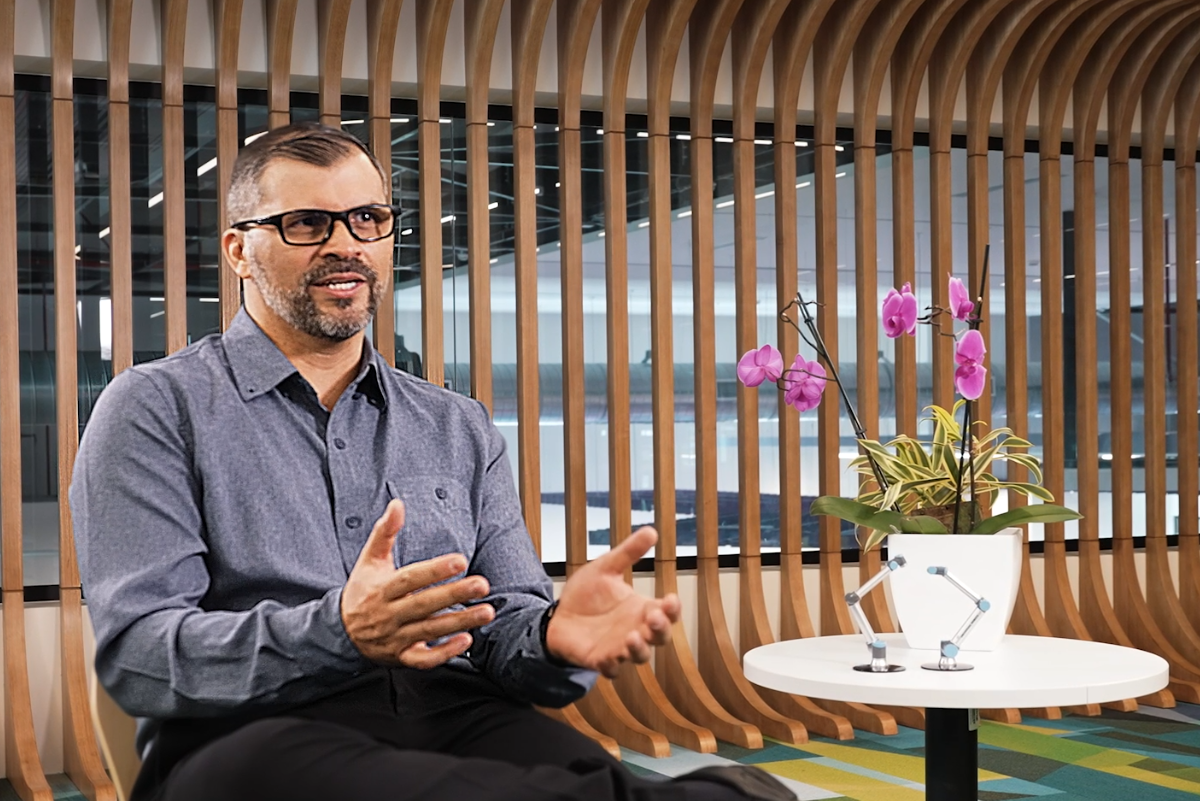Carlos Esquivel, Site Manager & Pilot Line Manager at Teradyne: “Costa Rica is in a very good position to lead the semiconductor industry in the region”
Teradyne has been operating in Costa Rica for over 23 years. Its success as a semiconductor company in the country is evident by its relocation at Coyol Free Zone in 2021, where it has enhanced its Research and Development, among other capabilities for semiconductor companies.
Carlos Esquivel, a long-time engineer at Teradyne who leads the operation in Coyol Free Zone, Costa Rica, believes that we are ready as a country to take a step forward in this industry, thanks to the incentives offered by the Free Trade Zone Regime to companies, and having the United States as an ally to develop this sector.
Read: Costa Rica, Privileged Location Connected to the World
The efforts to support this industry through talent training and infrastructure are crucial, according to Esquivel’s analysis of the most important factors for serving this type of semiconductor companies. Here’s an excerpt from our conversation with the semiconductor expert:
What is Teradyne’s role in Costa Rica and what factors contribute to its success?
With 60 years of being in the industry, Teradyne is a world leader in automated test solutions, widely used in semiconductor manufacturing processes, as well as in other types of electronic devices. We have a broad portfolio in industrial automation and provide industrial automation solutions using robots for that purpose. The company has a strong track record with decades of innovation in the technology industry and we have representation in multiple countries.
What can you tell us about the development of this industry in Costa Rica?
I believe that our country has undergone significant evolution since the arrival of a company as influential as Intel, thus opening numerous opportunities for growth and helping to develop other related industries. For instance, Teradyne, while not involved in semiconductor manufacturing, provides the equipment necessary to test these semiconductor devices before they are released to the market.
The development of the industry is extensive and, compared to other countries in the region, Costa Rica is in a very good position.

Which challenges do educational institutions face to prepare professionals or technicians?
The central axis in all this type of investment is talent. No company is going to want to come and invest in the country if it does not have the necessary talent to satisfy its operations. That is the central axis, and it is precisely there where the opportunity to improve as a country lies. I am referring to Academia, where talent must be constantly refreshed, constantly updated. That is perhaps one of the challenges that Costa Rica and Academia in general are currently facing.
I think that a convenient and perhaps the best way to address this situation is through ongoing interaction and cooperation between industry and Academia. The industry should continually provide Academia with feedback on technological trends and the training needs that companies encounter.
Similarly, the industry should provide hands-on learning opportunities for students pursuing related careers, allowing them to fully engage with the subject prior to entering the workforce.
What is the potential of Costa Rica for attracting semiconductor companies compared to countries with which we compete?
One of the essential elements is the political and economic stability of the country. Another element that is clear for investment consists in the incentives offered, which are attractive for the financial health of the company that would be establishing its operations in Costa Rica.
We are the primary allies of the United States in the region, competing with other countries such as Brazil, Mexico, and Panama. What does Costa Rica offer that these other destinations do not? Primarily, education, as historically we have been far ahead of other regions in this aspect, which has favored us. I would also add political stability, which is an attractive aspect for any type of investment.
This is the reason for which the Free Trade Zone Regime and being constantly aware of what our competition is doing is important. In this manner, we remain competitive enough in terms of incentives.
How will help the CHIPS Act of the United States attract investments and develop the industry?
If Costa Rica can provide the necessary talent to these companies, it will be competitive. There are many ways in which this alliance can benefit us, but I think that the United States should support us mainly in the training of that talent. This support will allow us to access advanced educational institutions that can help us bridge the training gap that we currently face.
Does a solid Free Trade Zone Regime mean an advantage for Costa Rica when attracting semiconductor companies?
The Free Trade Zone Regime has historically been attractive to large multinational companies. This is an indication of its success. The recent modifications in the incentives are another determining factor that will position us even better in front of these companies.
I can’t speak for other countries, but in Costa Rica, there are very few barriers or formalities, making it easier for a foreign company to establish itself without any issues. Teradyne, for example, has been operating in the country for 23 years and has even expanded without facing administrative problems. This flexibility is valuable and sets us apart from other countries.
Which sub-industries can be born from a well-established semiconductor cluster in Costa Rica?
Like the current operations, we may see other companies interested in taking advantage of the incentives offered by Costa Rica. New sub-industries that could emerge to support the semiconductor industry include OSATs (Outsource Semiconductor Assembly Tests) and suppliers of the necessary inputs and services for these companies.
